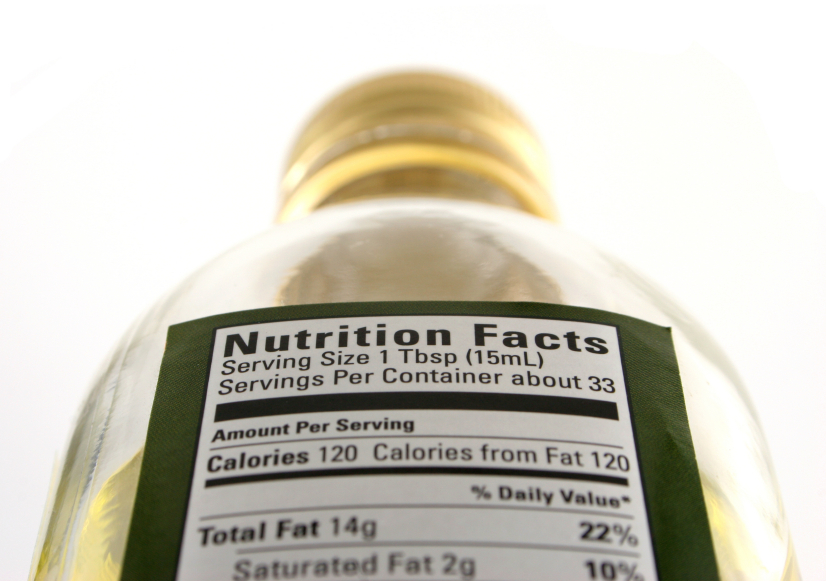This article was contributed by Debbie J., MS, RD –
A product’s packaging is good for enticing you as a consumer to buy that product; glossy pictures and tag lines attempt to lure us in at the grocery store. But to really compare foods and understand how they fulfill your daily nutrition needs, the most important part of the packaging is the food label.
The FOOD LABEL – Here you will find useful information about the nutrition content in your food. This label is uniform in respect to where the information is placed. This means that whether you are looking at a food label for turkey burger, potato chips or any other food for that matter; the nutritional information is always located in the same place on every food label.
Here is a run-down of the information on a food label from top to bottom.
Nutrition Facts
| Serving Size is usually given in household measurements (Cups, Tablespoons, etc.) as well as gram weight. It indicates the amount of product for which the nutritional values are reflected. |
| Servings Per Container tells you the number of servings included in the package. |
| Calories are given for a single serving. Keep in mind there may be multiple servings per package. |
| Calories from Fat are shown separately, but they are also included in the total. To determine the % of calories from fat, divide the Fat calories by the total Calories and multiply by 100. (This food is 6% Calories from Fat) |
| % Daily Value reflects how much of the FDA’s 2000 calorie Reference Diet nutritional goals are met by the food. Daily Values for Cholesterol, Sodium, Vitamins and Minerals stay the same across calorie levels. No Daily Values are given for Sugars or Protein, since no standard recommendations have been made for these. |
| Total Fat grams are provided as well as a breakdown of the types of fat. Saturated Fats and Trans Fats are associated with increased cholesterol production; whereas Polyunsaturated and Monounsaturated benefit cardiovascular health. |
| Cholesterol and Sodium milligrams are given in accordance with the current public health emphasis for limiting these. See the 2,000 Calorie reference diet information below. |
| Total Carbohydrate grams are provided and the breakdown for Dietary Fiber and Sugar are listed. |
| Protein grams tell you the amount provided by one serving. Protein guidelines are usually based on your body weight and age. |
| Vitamins A and C, minerals Calcium and Iron – the % Daily Value for these micronutrients are given in accordance with current public health emphasis for promoting adequate amounts of these vitamins and minerals. |
| 2,000 Calorie reference diet information: the limits suggested for Total Fat, Sat. Fat, Cholesterol and Sodium as well as the minimum goal for Fiber and Potassium. Total Fat level is 30% of the total Calories, Saturated Fat is 10% total Calories, Carbohydrate level is 60% total Calories. Fiber is based on 12 grams per 1000 Calories. |
| Calories per gram: the conversion factors for each energy-containing nutrient. This is constant for all foods. (Alcohol is not a nutrient but provides 7 calories per gram.) |
By comparing the food labels between similar food choices, you can find the cereal with the lowest amount of sugar, the bread with the highest amount of fiber or the soup with the lowest sodium. It’s as easy as A-B-C soup!
CLICK HERE to learn how to subscribe to LIVING HEALTHY!


Thank you. I have found this quite helpful. I have never been one to count calories as I always get confused and feel overwhelmed with the amount of time it takes to log every bite of food that passes through my mouth every day. I have been trying hard lately to make sure I read the labels on packaging, but it doesn’t always make sense. Any tips for tracking calories? Maybe something simple for the ladies who don’t even have time to do their own hair in the morning! Haha
Thanks!
I’m glad you’d rather focus on breakfast than the mirror! Keep snacks around 150-200 Calories and meals 500-600 Calories. Don’t worry about fresh fruits and vegetables. Any one side item or condiment that’s close to 200 Calories is out! If you have a dessert or glass of wine (real women do) – then skip the fat and starch at that meal to keep calories in check.